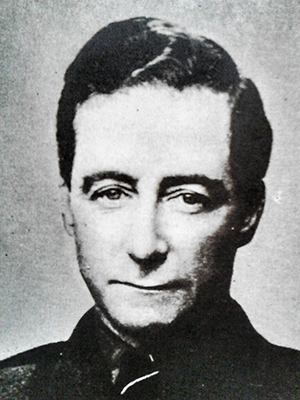100 YEARS AGO: Volunteer oath to the Dáil
Published in Issue 4 (July/August 2019), Volume 27By Joseph E.A. Connell Jr.

Above: Cathal Brugha—on 20 August 1919 he moved that every Dáil representative and Volunteer should swear an oath of allegiance ‘to support and defend the Irish Republic and the Government of the Irish Republic, which is Dáil Éireann, against all enemies, foreign and domestic’.
In August 1919 Cathal Brugha, as the Minister for Defence, took measures to bind the IRA to the Dáil. Initially, the Irish Volunteers were answerable to no authority except their own executive. On 20 August Brugha moved that every Dáil representative and Volunteer should swear an oath of allegiance ‘to support and defend the Irish Republic and the Government of the Irish Republic, which is Dáil Éireann, against all enemies, foreign and domestic’. Though the Volunteers were the army of the Irish Republic, the term ‘IRA’ was never officially adopted. The Volunteers continued to use that term, although the British ordinarily used ‘IRA’ or ‘Sinn Féiners’.
The motion sparked much debate. Tom Kelly called it ‘a species of coercion against the Volunteers’. Arthur Griffith, acting president in Éamon de Valera’s absence in the US, spoke strongly in favour of the oath. Brugha said that he regarded the Irish Volunteers as a standing army and that, as such, they should be subject to the government. The motion passed by 30 votes to five.
The controversy over the oath to the Dáil speaks to the lingering distrust between various sections of the republican movement. Military theorist Carl von Clausewitz insisted that military authority should be subject to civil authority and that wars cannot be conducted without the political ends in view. In a war such as that being fought in Ireland, in which the sides were so unequal and many anticipated a negotiated settlement, this necessity was even more apparent.
Nevertheless, the Volunteers were created as an independent organisation, and the Dáil’s recognition that the IRA founded the Republic during the Easter Rising gave them a certain legitimacy for many of the rank-and-file. For these reasons the oath created some dissension. Todd Andrews later wrote: ‘I was sorry we took the oath to Dáil Éireann. I thought, or rather felt, that no outside organization should have any say in the activities of the Volunteers.’
Neither the Dáil nor the Volunteers were eager to formalise their bonds with each other. The Dáil, for its part, was more dilatory in admitting, or asserting, its responsibility for military actions. In practice, the oath was unevenly administered to various republican units at the discretion of their officers, but theoretically it bound the IRA to the Dáil.
The relationship between the two arms of the movement, military and political, remained ambiguous but strengthened as the conflict deepened and each became dependent on the other. Among the conflicts in views between those advocating ‘constitutional means’ and those of a more ‘physical force’ bent, the combination of effort in the military and political spheres was well illustrated in the campaign against the RIC. The attacks on individual RIC men, and the attacks on their barracks, were coordinated with a national call for the constables to resign from the force, discouragement of enlistment in it and social ostracism of those who refused to comply.
The Dáil announced the policy of ostracism of RIC men and their families earlier in 1919. This proved successful in demoralising the force as the war went on, as people turned their faces from a force increasingly compromised by association with British government repression. The rate of resignation went up and recruitment in Ireland dropped off dramatically. The RIC were often reduced to buying food at gunpoint, as shops and other businesses refused to deal with them. Some RIC men co-operated with the IRA through fear or sympathy, supplying the organisation with valuable information.
In the spring of 1920 the RIC numbered around 9,700 men. From the beginning of 1919 to the time of the Truce in July 1921 the police sustained more than 1,000 casualties, constituting two thirds of all those suffered by the Crown forces, including 370 dead.
Joseph E.A. Connell is the author of Michael Collins: Dublin 1916–22 (Wordwell Books).
















